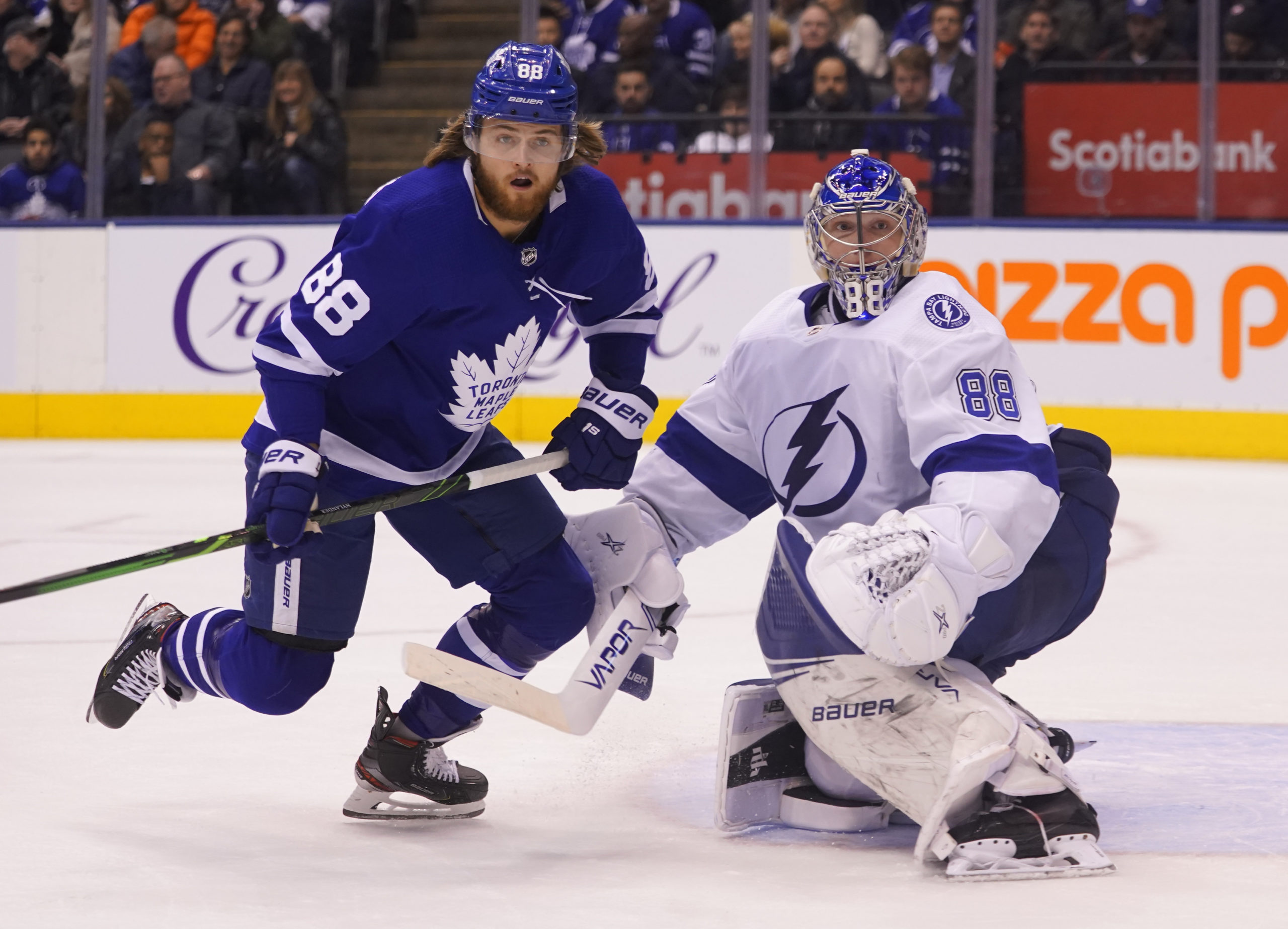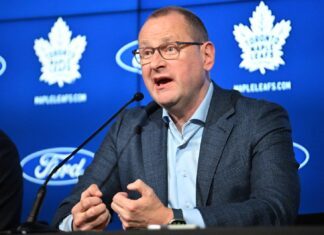A new NHL season is upon us. Tonight, the Lightning and Rangers, as well as the Kings and Golden Knights, kick off their 2022-23 seasons, officially getting the ball rolling on the new NHL campaign.
To preview the Atlantic Divison, I decided to structure this by listing one storyline I’m interested in following for each of the Leafs‘ rivals this season. It could be a player or a positional group, an X-Factor, or merely a reason to watch each team.
Is Ottawa’s core worth the money they’ve been given?
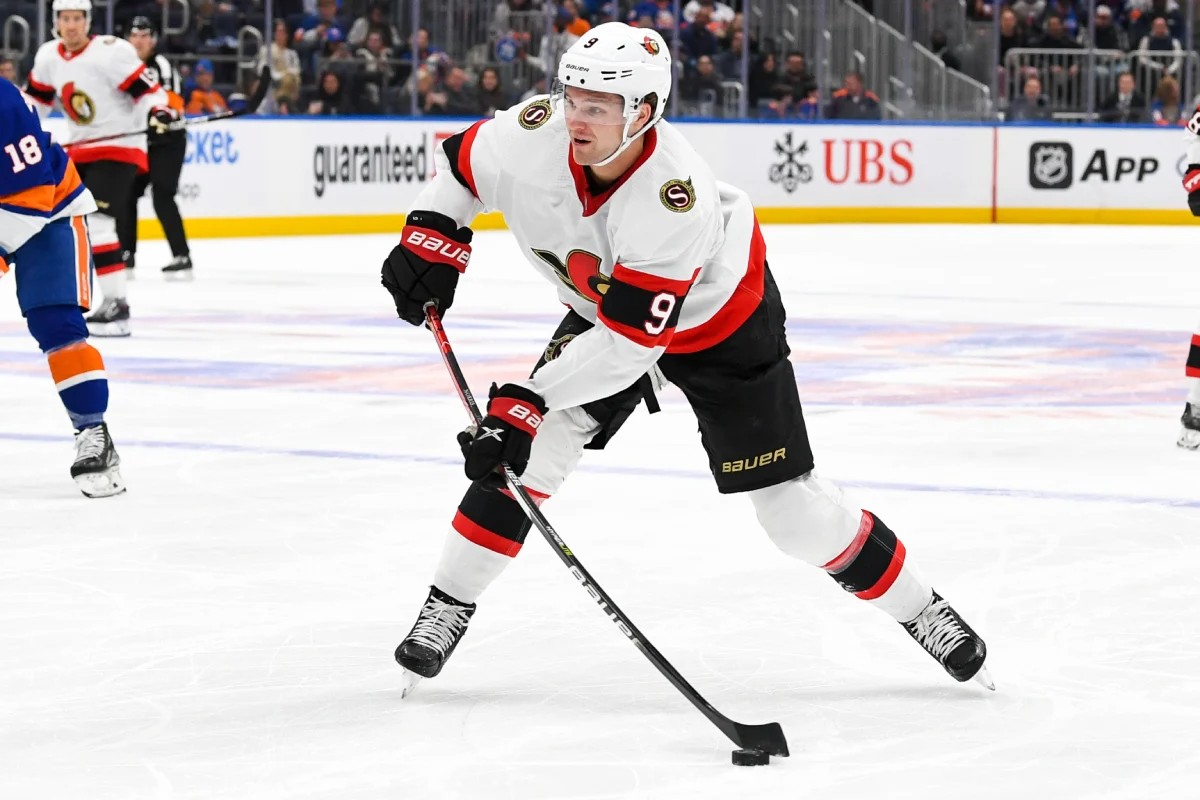
A lot of people will focus on the huge moves that the Senators made, inking the second-most discussed free agent contract and executing the second-most discussed trade in Claude Giroux and Alex DeBrincat, respectively. I get that. Those are the shiny new toys, but GM Pierre Dorion also dropped the dough for the toys they already had, locking up the existing core.
Over the course of the last year, Dorion gave 7x$8.2 M to Brady Tkachuk, 8x$7.95 M to Josh Norris, 8x$8.35 M to Tim Stützle, and 6x$4.98 M to Drake Batherson. That’s nearly $30 M doled out to four forwards! If you want to toss in Thomas Chabot’s 8x$8 M deal signed a few years back, you have close to half the cap given to five players, all of whom are signed for at least the next five seasons.
I’m not against the strategy of allotting a lot of the cap to only a few guys on principle. You need elite players to win the Cup! If those guys are Stamkos/Hedman/Kucherov/ Vasilevskiy or Makar/MacKinnon/Rantanen/Landeskog, I can get behind it. Those guys are all top 50-100 players in the league, including several of the top Hart contenders in a given year. But none of those Senators players right now are anywhere close to that level.
I like several of those players, to be clear. But are Norris and Tkachuk and Stützle in the same conversation as any of those forwards? No. Is Chabot in the same sentence as Hedman or Makar? No. Chabot’s deal is fine in the abstract given comparable contracts (Morgan Rielly, Darnell Nurse, etc), but this is a lot of multi-year, high AAV deals given to non-elite players.
Pierre Dorion made a bet that this core will grow into one that contains at least one or two elite players. We need to see signs of that from at least a few guys this year and that question is tied pretty closely to whether this squad makes the playoffs.
Are the Canadiens too good to tank for Connor Bedard?
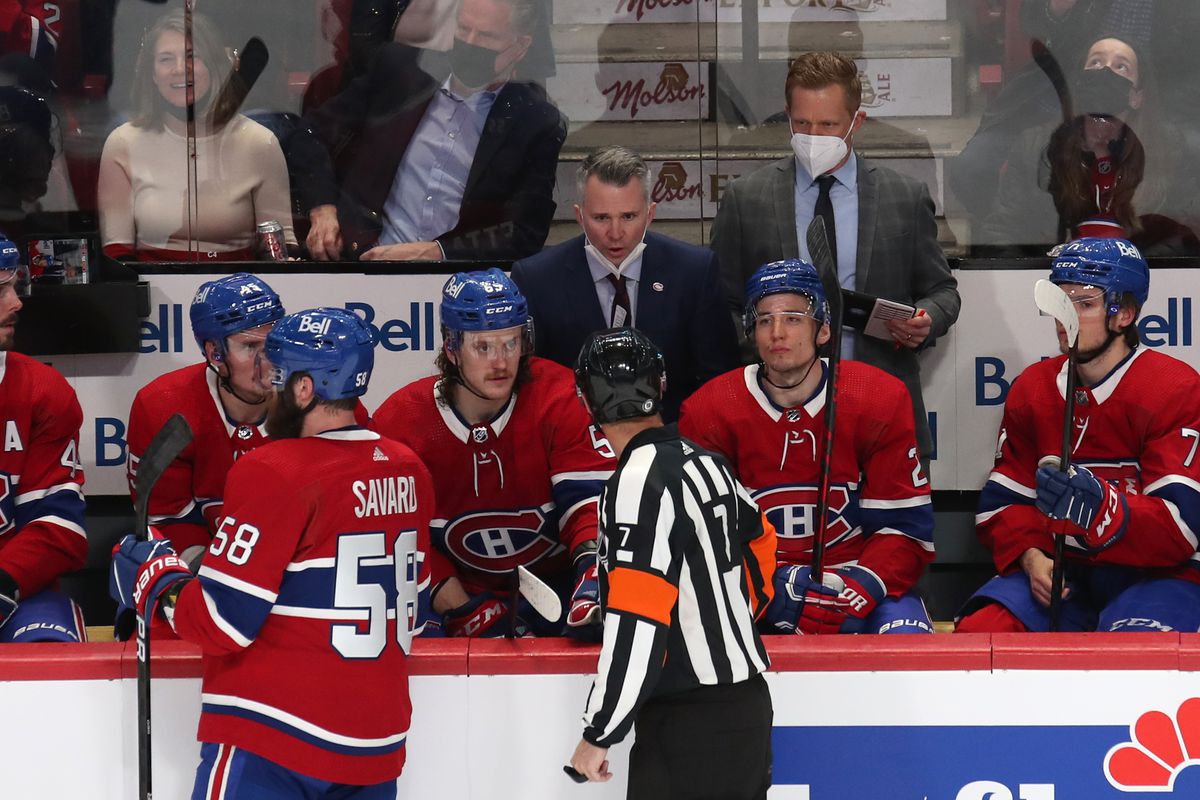
If your definition of “tank” is “be the last-placed team,” then the answer is obviously yes. Their roster is significantly better than the Coyotes and Arizona is fully committed to the bit. I would be shocked if anyone out-tanks Arizona. But are the Canadiens too good to finish bottom three or four? That’s what I’m unsure of.
They were the NHL’s worst team a year ago, but when you look at this roster, it doesn’t strike me as one that will obviously be bottom two in the league. Yeah, the defense is rough, but there is some upside with young guys like Jordan Harris and Justin Barron. Same thing with the goaltending situation, where Jake Allen is not a great option, but he’s definitely miles better than Karel Vejmelka. Allen has a career .911 in the NHL and has started 23 playoff games. Different ballpark.
Their forwards are also filled with plenty of decent players. Many played poorly last year, dealt with injuries (Brendan Gallagher), or have questions about their true calibre (Nick Suzuki and Cole Caufield), but with this roster, I see a 75-point team — not a 60-point team — and a number of squads will be gunning to be 60 or fewer.
Arizona, for that matter, is possibly crashing under 50. You also have to factor in the Marty St. Louis situation as the team went 14-19-4 under the new coach last season, which is a 70-71 point pace across a full season. Unless they choose to slash the tires more and sell off pieces or come up with some carefully timed “injuries,” I don’t think the Canadiens will be in the bottom three NHL teams next season… which makes the dream of Connor Bedard in the blue, blanc et rouge more unlikely.
Can Derek Lalonde and Steve Yzerman’s acquisitions fix the Detroit defense?
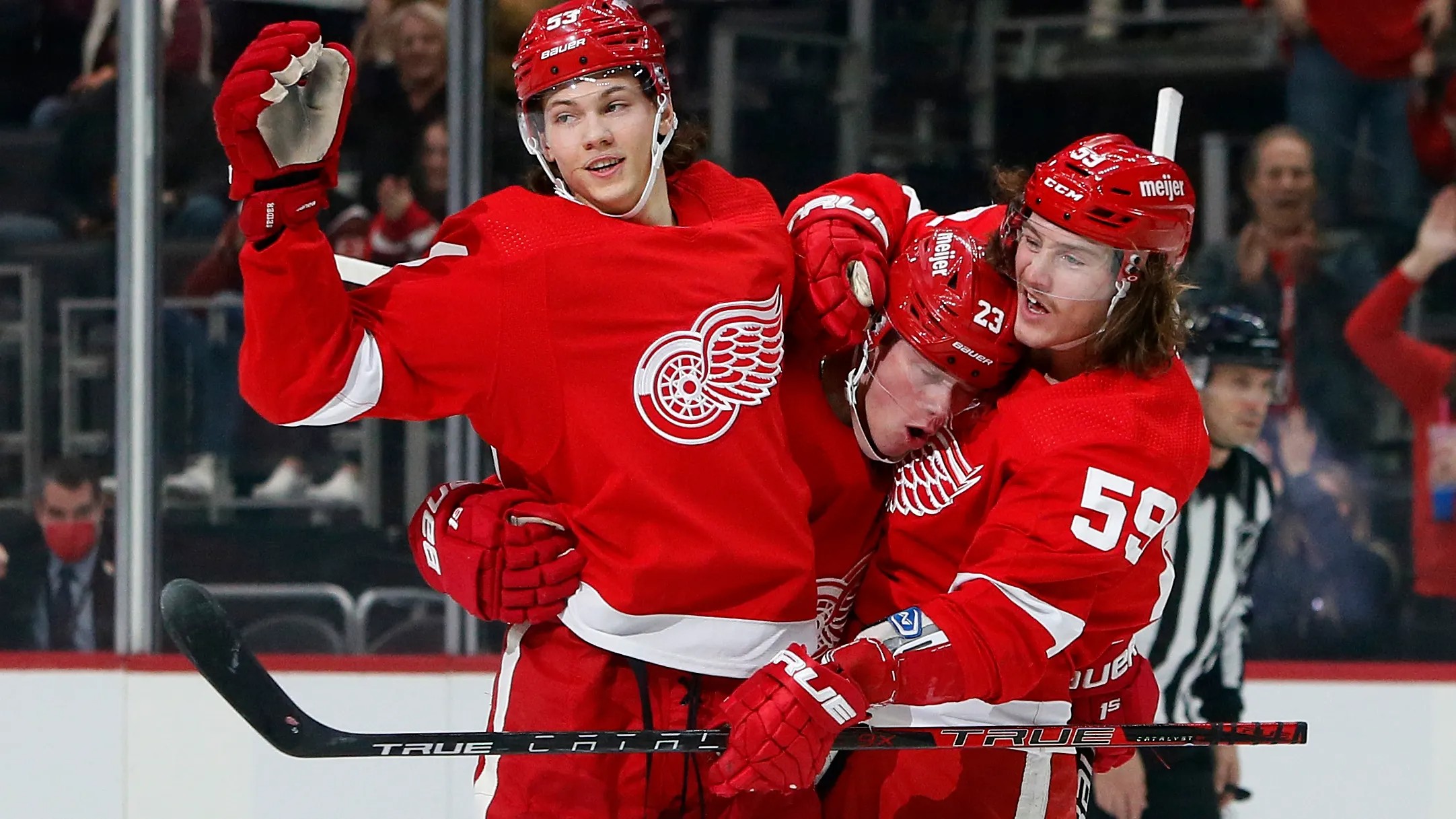
The Red Wings didn’t make the splashiest moves in this division — one-upped by their rivals in the Canadian capital — but boy, were they busy.
GM Steve Yzerman has made it clear he wants this team to be drastically more competitive and perhaps even push for the playoffs. He handed out UFA contracts to four different defensemen, three forwards, and a goalie, totaling $26.275 M in cap space for this season(!). It was a series of bold moves and he also added a new head coach in Tampa Bay assistant Derek Lalonde. Now, can all these changes get the Red Wings to where Yzerman wants them to be?
The Red Wings were not good offensively last year, but I feel pretty comfortable projecting a sizable offensive leap. Growth from Lucas Raymond, Tyler Bertuzzi getting to play in Canada this year, and better health from Jakub Vrana will be part of that, plus the offseason additions: David Perron will help the PP, Dominik Kubalik can shoot the puck, and Andrew Copp is an effective 2C.
But the defensive side of the game is where the Red Wings were worst and there I’m a bit more uncertain. Detroit wasn’t just bad last season defensively — they were a catastrophe. They allowed five or more goals *32* times last season, six or more goals *15* times, and seven or more goals *10* times. That cannot happen. I know the defensive talent was bad, goalies weren’t great, scoring was up across the league, and so on. But it just cannot happen. It was enough reason to fire Jeff Blashill.
Ben Chiarot is a defenseman I’m not a huge fan of, but he isn’t as terrible as the analytics say. Next to Seider, he should be okay. Olli Maatta is a fine player and was a nice add, but the defensive depth and overall shape of the defensive lineup is not great yet. Maybe Swedish prospects Simon Edvinsson or Albert Johansson break through midseason, but right now, Detroit getting significantly better defensively rests on three things: structural improvement from Lalonde, two decent to good pairs (Chiarot-Seider, Hronek-Maatta), and good goaltending.
The latter is a black box as it always is. Alex Nedeljkovic and Ville Husso are two fair-value lottery tickets, but they are just lottery tickets. I think I feel best about the coaching improvement happening and I’m more iffy on the other two, but these three seem like they will say a lot about how close this team comes to the playoffs.
The Boston Bruins and the Elixir of Life
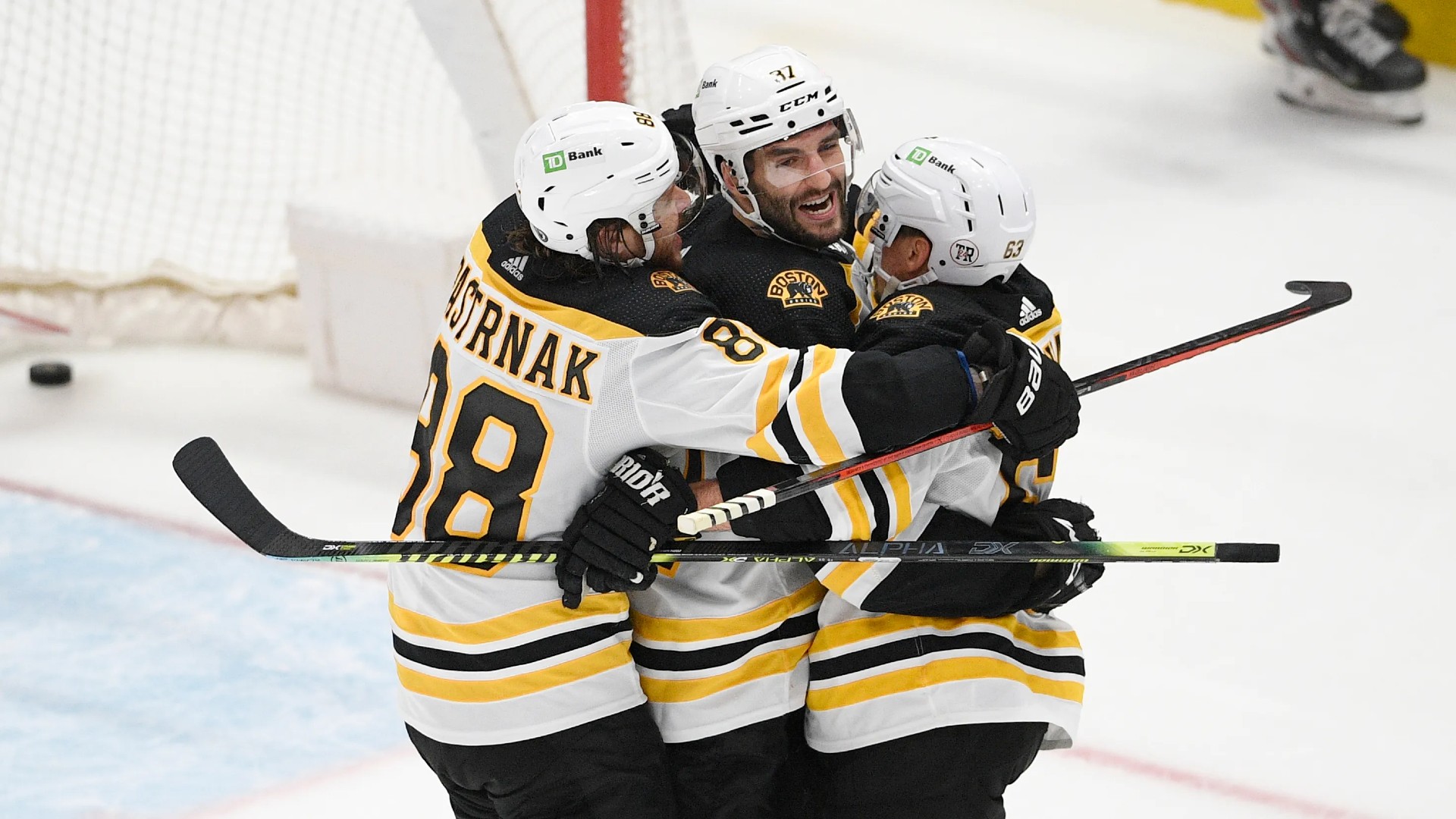
Speaking of things that feel like Waiting for Godot, predicting the day in which Patrice Bergeron and Brad Marchand age like normal hockey players feels much the same. Every year I say, these guys are “_____ years old now, this can’t go on forever,” and it does.
So here it goes again: Patrice Bergeron is now 37, Brad Marchand is 34, and this can’t go on forever. I am fully assuming that it will, but as everyone who has discussed the Bruins has commented, this team does feel like a ‘Last Dance’ scenario.
Bergeron agreed to come back on a one-year deal and much of the reporting suggests this might be it. David Krejci agreed to return from Czechia at age 36 to play on a one-year deal. David Pastrnak is a pending UFA who has not inked an extension and reports are that he is unhappy. The Bruins have just four forwards of note on the books for next season, with everyone else a UFA or RFA, a group that also includes goalie Jeremy Swayman.
Boston could look very different this time next season, and they will navigate this huge season with a new coach behind the bench (Jim Montgomery) and injuries complicating the start of the year. Defensemen Charlie McAvoy and Matt Grzelcyk are out a month or two each, as is Marchand. Despite the moving pieces, the injuries, and some uncertainty with the netminders, whether the Bruins can contend for a Cup one more season hinges on whether the Elixir of Life is still on sale in Massachusetts drugstores.
Whatever concoction has allowed Marchand to hit his prime in his 30s and Bergeron to be at his peak defensively in his mid-to-upper-30s is the secret to Boston’s success. If either or both of those guys decline some, the Bruins could be in trouble. If they are their usual selves, the Bruins probably will be, too.
Do the Lightning have enough in the tank to go on another run?
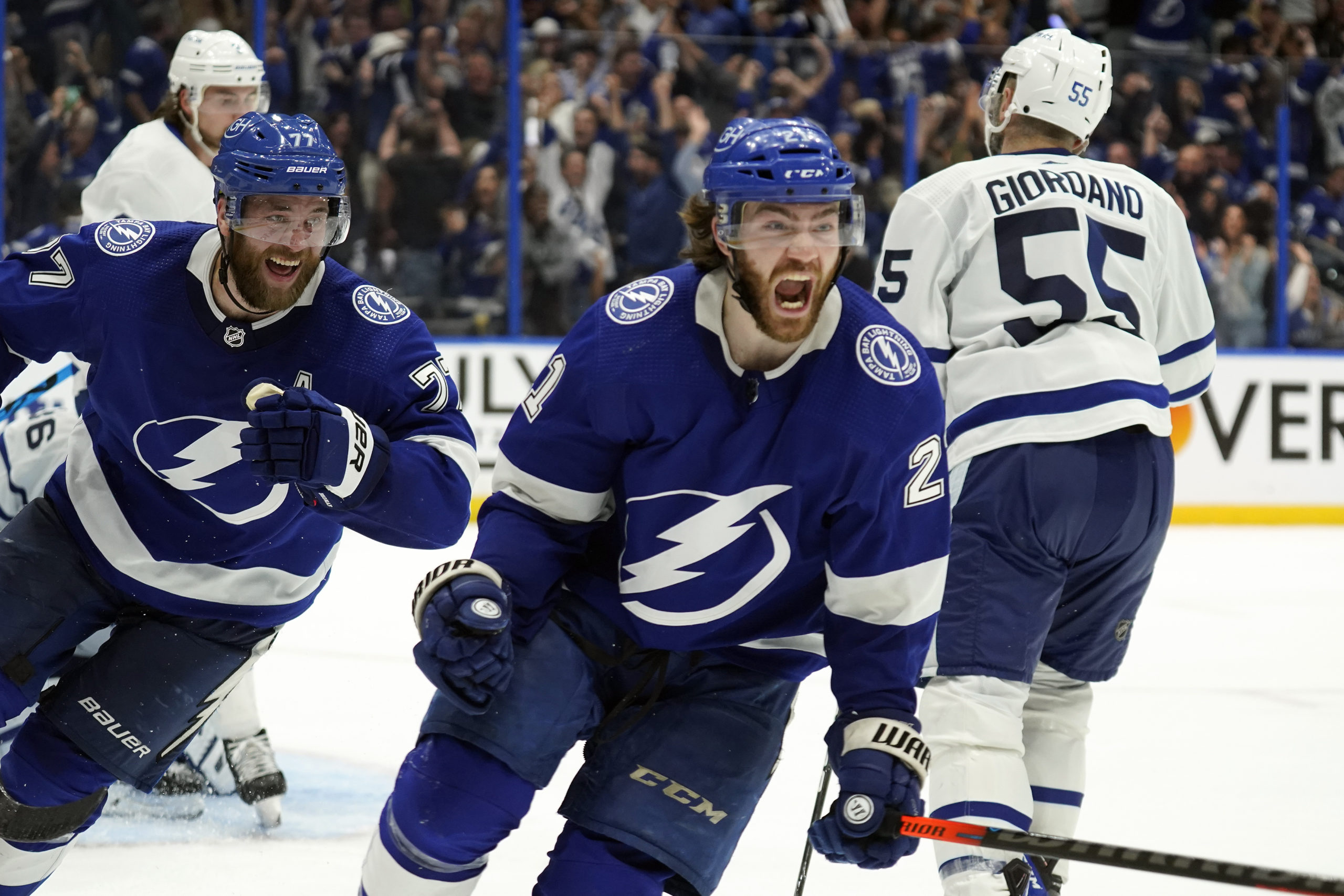
Last season, I got too deep into hockey history and insisted the Lightning couldn’t move past the second round because it hadn’t happened for a repeat champ in decades, something I realized was wrong once I saw how the path for Tampa was setting up after they edged Toronto in Game 7. Continually hoping that this is the year Tampa isn’t elite feels like Waiting for Godot at this point, so I’m not going to do that anymore.
The Lightning’s roster got a fair bit worse in the offseason in losing Ondrej Palat and jettisoning Ryan McDonagh, even if the latter was the correct move for the cap and the long-term picture. But even with those losses, they arguably have the best roster in hockey — certainly the one with the most stars at all three positions — and until someone beats them *in the playoffs,* they are the rulers of the Eastern Conference.
Tampa got off to a tremendous start last season and then they sleepwalked for several months. Debates raged across Atlantic Division fanbases about whether Boston or Tampa would be the scarier playoff opponent, something that seems very silly in hindsight. As the team slumped along in March, part of me thought the Bolts might finally be on the ropes.
Then they turned it on in the playoffs. They played a tremendous series against a great opponent in the Leafs, then slapped around the Presidents’ Trophy winner (Florida), and showed the resolve of a champion to rally to beat New York. They ran out of gas and played a team that was better in the Cup Final (Colorado), but the lesson of that story is no matter how cooked the Lightning may look this season at times, they are not dead until they are dead in the playoffs.
We can learn nothing about Tampa in the regular season and so my only storyline with this team is whether they have enough gas in the tank for a fourth straight playoff run.
The kids and the Buffalo Sabres
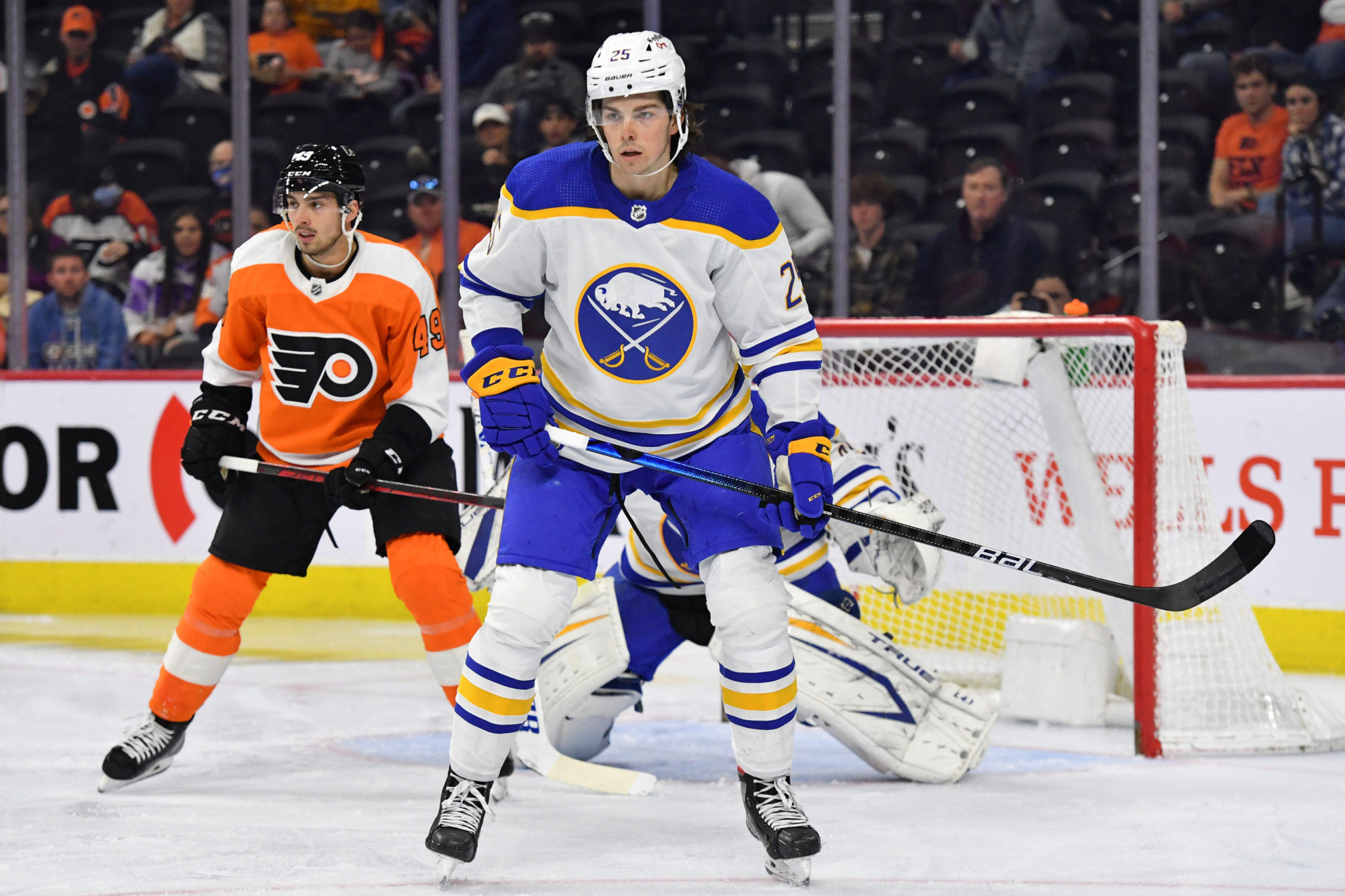
For my money, it is commendable what the Sabres are trying this season, even if it doesn’t work out. Rather than going out and signing veterans with the infinite cap space they have, blocking their loaded prospect pool (like so many teams do, e.g. the LA Kings), the Sabres have decided to keep spots open on the roster and let the kids learn.
Last season’s team already had many young players on it regularly, Dylan Cozens, Mattias Samuelsson, and Peyton Krebs, and the slightly more experienced Rasmus Dahlin, Henri Jokiharju, Jacob Bryson, and Casey Mittelstadt, but now another wave of youth is here. Owen Power (20) will make his full-time debut this season, as will Jack Quinn (21) and possibly John-Jason Peterka (20). In total, the Sabres are possibly going to run out a roster in which eight of 12 forwards and five of six defensemen are age 25 or younger. CapFriendly has pegged the Sabres as the youngest opening night roster in the NHL.
So many NHL teams are afraid of the youth. I joke sometimes that no one in the NHL hates young players more than NHL coaches, who so often put promising and talented players in the doghouse for small, fundamental mistakes and favor older/worse players because they are less likely to make that mental mistake. It’s a trade-off for sure, but it also has a history of stunting the development of young players and it’s how you wind up burning prospects.
The Sabres are going in the total opposite direction, saying “screw the old guys, and we don’t care if these kids make 15 mental mistakes per game. It’s time for them to learn.” It’s swimming against the current, and it should be fascinating to watch.
Is Florida contending for a Cup with that defensive depth chart?
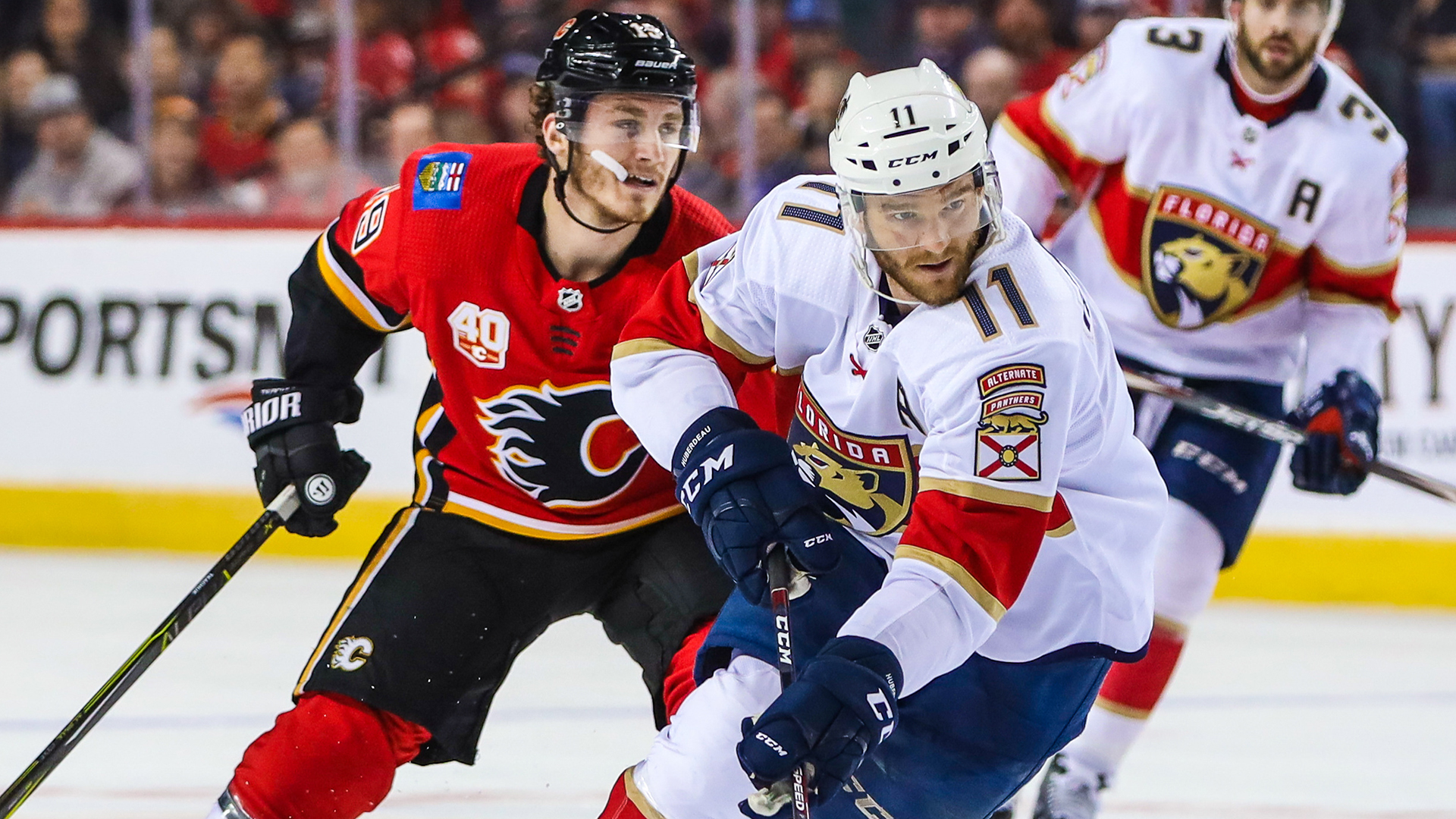
The first thing I thought of when the blockbuster Matthew Tkachuk trade went down was “the Panthers gave up MacKenzie Weegar?” I had heard he was possibly on the trade block, but I never thought it could happen unless there was a defenseman coming back. Instead, the Panthers shipped out a star defenseman and didn’t replace him. Matthew Tkachuk is an incredible player and I can be persuaded that perhaps Tkachuk at that deal > Weegar/Huberdeau at their extension prices long-term, but it’ll be hard to sell me on the idea that Florida isn’t quite a bit worse off in the immediate term as a result.
Weegar is a divisive player in some circles, even though I remain steadfast in my praise of him. His analytical metrics are awesome and in my opinion, so is the eye test. Weegar is culpable for the One Big Mistake from time to time — as was the case in the playoffs — but he’s a right-shot defenseman who has finished top 15 for the Norris two straight years, one who drives play at both ends of the ice and shoulders more than 23 minutes per game. Now he’s gone and the replacement is…. 35-year-old Marc Staal?
I already felt the Panthers were weak at defense and now they have gotten even weaker. They have several good puck-moving defensemen — guys like Brandon Montour and Gustav Forsling who I like to push play up ice and join the rush within Florida’s system — but are those guys you want on the ice late in a game protecting a lead? Not for me. Right now, they have one defenseman on their roster who fits that bill for me and his name is Aaron Ekblad. He’s a sensational player, but he can’t do it alone.
Right now, Florida’s defensive depth chart is far worse than that of Tampa, Carolina, Toronto, Colorado, or Calgary among the teams that many consider to be in the “contender” tier, and that’s a major problem for them worth monitoring.
Matt Murray, Ilya Samsonov, and the future of the Maple Leafs
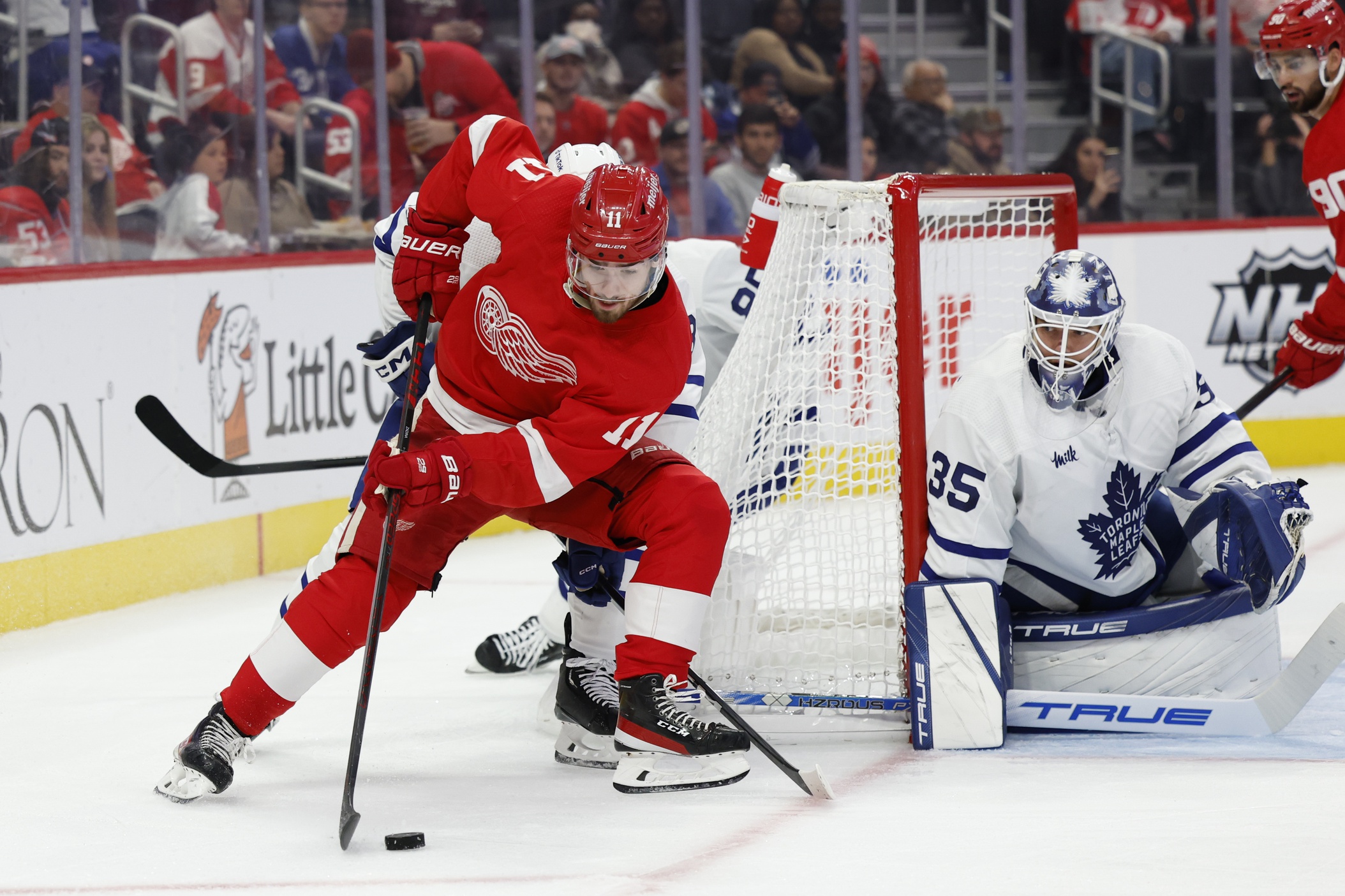
Perhaps the most interesting development of the offseason was Kyle Dubas, a GM whose job probably depends on the outcome of this season, placing his faith in net on Matt Murray and Ilya Samsonov, who are more lottery tickets than known commodities right now. A typical GM fighting for his life would’ve signed Darcy Kuemper — long-term contract consequences be damned — because the short term is all that matters to the GM’s self-interest. But Dubas didn’t do so, saying that term on the contracts were a primary reason for acquiring Murray/Samsonov. Is Dubas being extraordinarily selfless in helping the organization he works for or is he just supremely confident in two guys that few fans are confident in?
I’m not sure. There are reasons to be optimistic about both. Murray is a 2x Stanley Cup-winning goalie who has ideal size for the position and has made structural changes to the way he plays the position in recent years, ones that started to bear some limited fruits last season in Ottawa. As for Samsonov, he’s a former elite prospect who dominated the second-best pro league in the world (KHL) in his early 20s and is still only 25. On the other hand, neither guy has been particularly great the last few years, and in Murray’s case, injuries are a real concern.
The Leafs also replaced goaltender coach Steve Briere with Curtis Sanford, so there are a lot of moving parts here. Maybe it all works out. Both goalies looked sharp in the preseason, which largely means nothing, but hey, that’s better than looking awful in the preseason!
I honestly don’t know what to expect, but one thing is for sure concerning the Toronto Maple Leafs and the sport’s most talked-about position: It’s sure to be a major discussion point all season long.
Alex Drain’s storylines for the rest of the Eastern Conference as well as Western Conference teams are available here and here.























